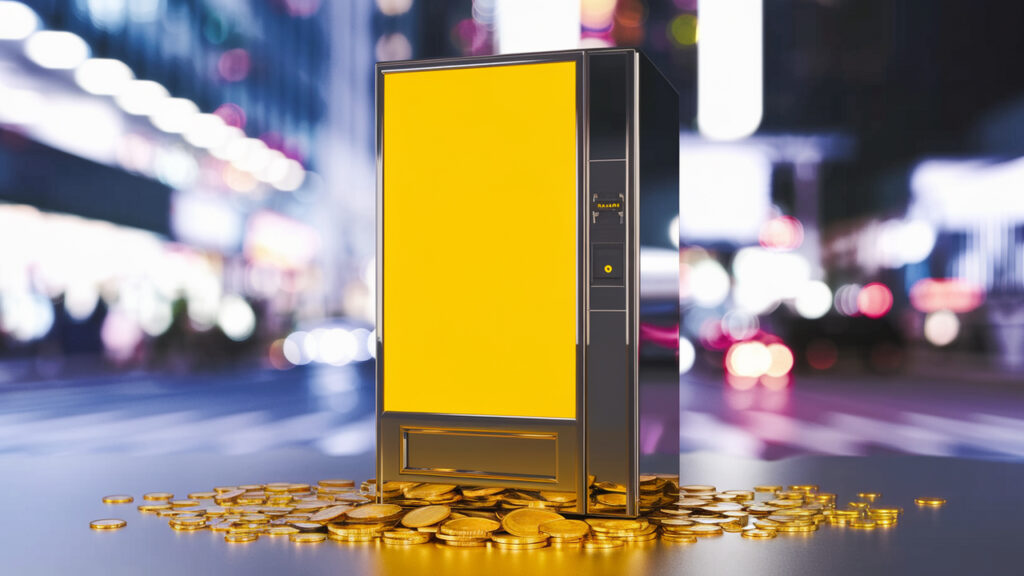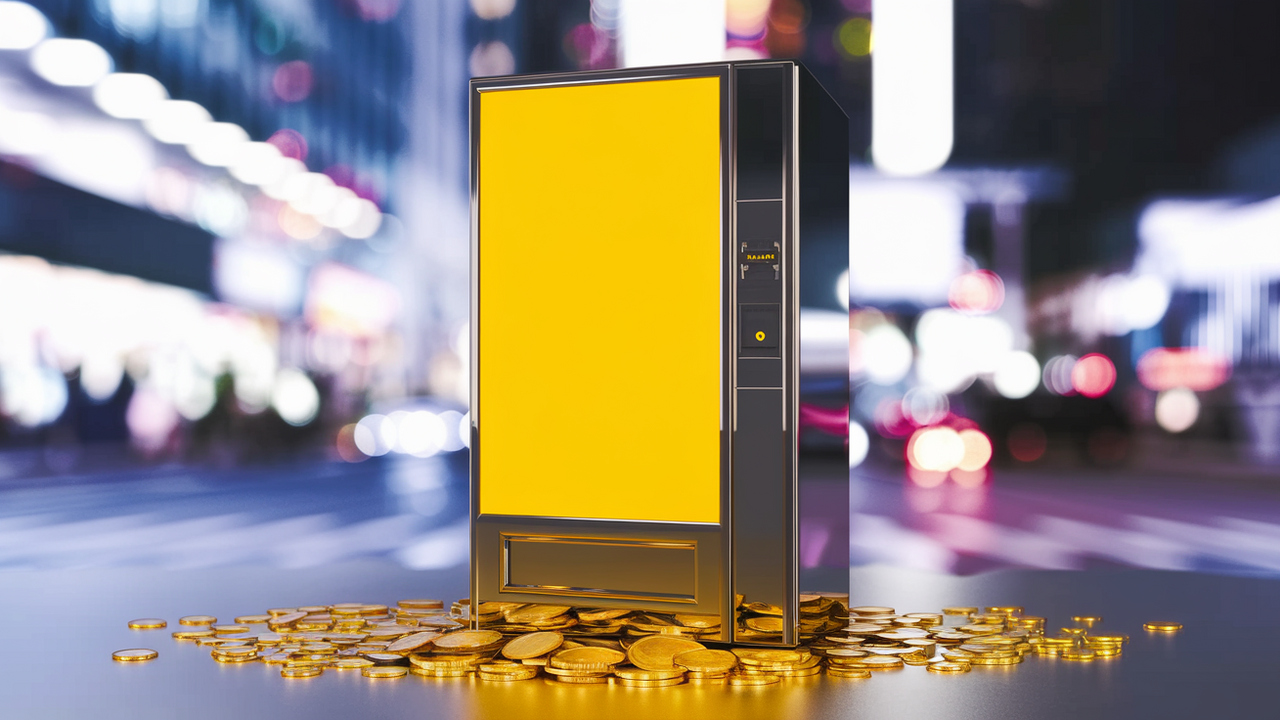How to Calculate ROI on a Vending Machine Investment
When I bought my first vending machine, I wasn’t just guessing—I wanted to know how long it would take to get my money back. Whether you’re a beginner or scaling your vending route, understanding how to calculate ROI on a vending machine investment is key to making smart, profitable decisions.
In this post, I’ll break down the step-by-step process to calculate vending machine ROI, show you real examples from my own machines, and give you a free formula to use for any future investment.

Table of Contents
What Is ROI in the Vending Business?
ROI (Return on Investment) tells you how long it will take to earn back the money you put into your vending machine—including the cost of the machine itself, inventory, delivery, and setup.
In vending, ROI is measured by:
How fast you recover your startup costs through profits.
If your machine cost $3,000 and earns you $300 in profit per month, your ROI timeline is 10 months. After that, it’s pure profit.
Step-by-Step Formula to Calculate ROI on a Vending Machine
Here’s the simple formula I use:
ROI Time (Months) = Total Initial Investment / Monthly Net Profit
Let’s break it down:
1. Total Initial Investment
Include:
- Cost of the vending machine
- Shipping & installation fees
- Credit card reader or upgrades
- First inventory load
- Custom wrap or branding (if applicable)
- Any commissions paid upfront to location owner
💡 Example:
- Machine cost: $3,000
- Shipping & setup: $250
- Card reader: $300
- Inventory: $250
Total Investment: $3,800
2. Monthly Net Profit
This is your revenue minus costs each month. Subtract:
- Cost of goods sold (COGS)
- Gas/mileage for restocking
- Location commission (if any)
- Transaction fees (card readers)
💡 Example:
- Monthly revenue: $900
- COGS: $400
- Gas: $50
- Commission: $90
- Card fees: $30
Monthly Profit: $330
3. Plug Into the Formula
$3,800 / $330 = 11.5 months to ROI
That means it’ll take 11–12 months to recoup your full investment. After that, the machine generates $330/month in passive income.
Free ROI Calculator (Quick Version)
(Machine Cost + Setup + Inventory) ÷ (Monthly Profit) = Months to Break Even
Here’s one you can copy/paste into your spreadsheet:
CopyEdit= (A1 + A2 + A3) / A4
Where:
A4 = Monthly Net Profit
A1 = Machine + Upgrades
A2 = Setup & Delivery
A3 = First Inventory
How to Speed Up Your Vending ROI
I’ve improved my ROI by doing these things:
- Negotiate lower commissions (5–8% instead of 10–15%)
- Use cashless payment readers – increases sales by 30–40%
- Stock bestsellers only (fast-moving snacks & drinks)
- Pre-chill drinks to reduce complaints & returns
- Place machines in high-foot-traffic areas (offices, gyms, dorms)
- Bundle low-cost items together to increase vend price per slot
Bonus: Include Tax Benefits in ROI
If you buy vending equipment for your business, you may qualify for Section 179 tax deductions. In 2025, you can potentially deduct the full cost of your machine—further shortening your ROI window.
Talk to your accountant about how to include this when running numbers.
Final Thoughts
Knowing how to calculate ROI on a vending machine helps you avoid emotional buying and focus on profitability. Whether you’re investing $2,000 or $10,000, the math is simple—but the results can be powerful.
Track your investment. Monitor your profits. Adjust your strategy. That’s how you turn a single machine into a full vending business.
In my experience, combo vending machines (those that offer snacks and drinks) often have a slightly longer ROI—usually 9 to 12 months—because they cost more upfront. But they also tend to generate more consistent profits across seasons, especially in office buildings and apartment lobbies.
For drink-only vending machines, ROI is often faster in high-traffic areas like gyms or schools. I’ve had a $2,500 drink machine make its money back in under 6 months just from energy drink sales and water bottles—especially when placed near a workout facility.
Snack-only machines can hit ROI faster in break rooms, warehouses, or daycare centers, where workers and parents grab quick fuel. The cost of a snack machine is usually lower than a combo or smart machine, and stocking costs are more flexible. I once had a used snack machine hit break-even in just 4 months.
Tech vending machines (those with earbuds, charging cables, USB sticks, etc.) usually require more capital, and ROI varies widely. I’ve seen machines in airports or universities take 12–18 months, but the margins are much higher—especially when items sell for $8–$25 each.
I always suggest keeping a simple Google Sheets ROI tracker for each machine. I track purchase price, monthly revenue, expenses, and commissions all in one row. After a few months, patterns emerge, and I can see which machines are close to breakeven and which need help.
If your ROI is lagging, consider rotating your product mix. I once had a slow-performing combo machine in a gym. I removed candy and added high-protein bars, jerky, and Celsius drinks—and saw a 42% revenue increase the next month. The faster your products move, the faster you hit ROI.
One overlooked factor in ROI is downtime. Every day your machine is offline—due to power issues, payment problems, or stockouts—delays your return. I always suggest installing remote monitoring tools like PayRange or Nayax to stay on top of sales and alerts.
If you’re paying rent or revenue share for the location, factor that into your monthly operating cost. A 10% commission on a $1,000/month machine is $100 off your bottom line. Negotiating a lower percentage—or offering a fixed monthly fee—can significantly shorten your ROI window.
Also remember to consider reinvestment after breakeven. Once a machine is profitable, I usually set aside 20–30% of monthly profit for future maintenance, part replacement, or a second machine. This lets me grow my vending business without tapping into savings again.
In high-demand locations, ROI can happen faster than you think. I once placed a drink machine in a dog grooming salon—an unusual location—but due to foot traffic and few competitors nearby, I hit ROI in just 4 months. Location is everything in vending.
Another trick I use to improve ROI is to run seasonal promos. In the summer, I’ll drop prices on bottled water or sell “chill packs” with water + snack bundles. In the winter, I might push cocoa packets or energy bars. These promotions increase volume, which drives faster payback.
Lastly, don’t forget your time has value. If a machine is profitable but takes 3 hours a week to manage, I factor that into my return. A machine making $250/month with just 30 minutes of work beats one making $400/month that takes hours. Passive income is about profit and time efficiency.

